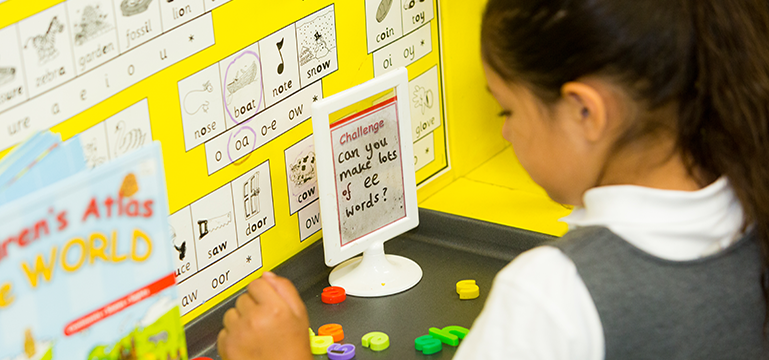Tracking system helps pupils to achieve targets

Quick links:
Information about the school
St John’s College is a co-educational, independent day school with a Catholic ethos that educates pupils from the age of 3 to 18 years.
There are currently 540 pupils on roll, of which 57 are in the nursery and infants, 117 in the juniors, 281 in the seniors and 85 in the sixth form. Although the majority of pupils come from South Wales, the school educates pupils from other parts of Europe, the USA, and the Middle and Far East.
Around 13% of pupils have special educational needs. The school is non-selective and pupils in Year 6 are generally guaranteed admission to the senior school. The school’s principal aim is to “ensure that pupils develop their full potential in every area of school life. In particular, the school encourages children to develop a kind and respectful attitude towards others.”
Context and background to the effective or innovative practice
Previously, the school used the same tracking system for all age ranges. On evaluating its effectiveness and analysing feedback from parents, the senior leadership team decided to refine the system, personalising it for different sections of the school and making it more age-appropriate. The primary aims of the refined system were to:
- Support pupils and provide intervention where necessary
- Challenge pupils to achieve their very best
- Encourage independent learning and self-reflection
- Provide more opportunities for parents and pupils to monitor academic progress throughout the year
Description of nature of strategy or activity
In the junior school, National Curriculum levelling and a range of standardised assessments are used to track pupils closely. Tracking information is scrutinised rigorously by subject coordinators, teachers and form tutors so that classroom teaching support and one-to-one intervention are tailored to the individual pupil. Targets are set termly with pupils in their English, mathematics, science and form lessons. These targets are monitored closely by all subject teachers to ensure that each pupil makes progress.
In the senior school and sixth form, each pupil is now given a target grade for every subject that they study. This grade is the minimum the pupil is expected to achieve by the end of the key stage in which they are studying. Target grades at key stage 3 are based upon a numerical system unique to St John’s College. For pupils in Year 9 to Year 13, the target grade for each subject is a letter (A*- G).
The target grades given to pupils are based on a range of prior attainment data (usually CAT or ALIS predictors, with challenge), as well as teachers’ professional judgement. All pupils are given a copy of their target grades at the start of each academic year, which is glued into the back of their homework diaries for ease of reference.
At the end of each term, all pupils are given a review grade for each subject based on their work throughout that term. The pupils then receive a sheet (which is subsequently posted home) displaying their review grades, which are colour coded, as follows:
- Blue = above target
- Green = on target
- Amber = below target
- Red = significantly below target
The school consciously removes the letters or numbers from the pupil copies of the sheet to prevent pupils analysing or comparing each other’s grades.
Following receipt of their review grades, pupils then spend a lesson with their form tutor discussing their reviews and making SMART targets for improvement across the next term. This allows pupils to take ownership for their learning and progress.
Pupils who may be struggling academically are flagged up and interviewed individually by their form tutor, head of year or the assistant head (academic). The school then offers support and intervention, including making use of older pupils as learning leaders. Pupils who are consistently working hard and to the best of their ability are sent a congratulatory postcard home. As a change in the academic profile of a pupil is often the first indication of a pastoral concern, the system also supports and informs the excellent pastoral care service already provided by the school.
What impact has this work had on provision and learners’ standards?
In the junior school, nearly all Year 6 pupils consistently attain the core subject indicator, with 100% reaching Level 4 this year. Most pupils identified with additional learning needs achieve Level 4. Most pupils make expected or above expected progress in English and mathematics assessments and each year group makes over 12 months’ progress in reading skills.
In the senior school, nearly all pupils make above expected progress. Clear progression throughout the year can be seen as pupils move from one colour to the next with hard work and support from the school. Value-added analysis for GCSE and A level shows that many pupils achieve on average one grade higher than their predicted CAT or ALIS grade.
Across the school, pupils are more confident at analysing their own performance and creating meaningful targets for improvement. This has raised standards and prevents pupils from coasting.